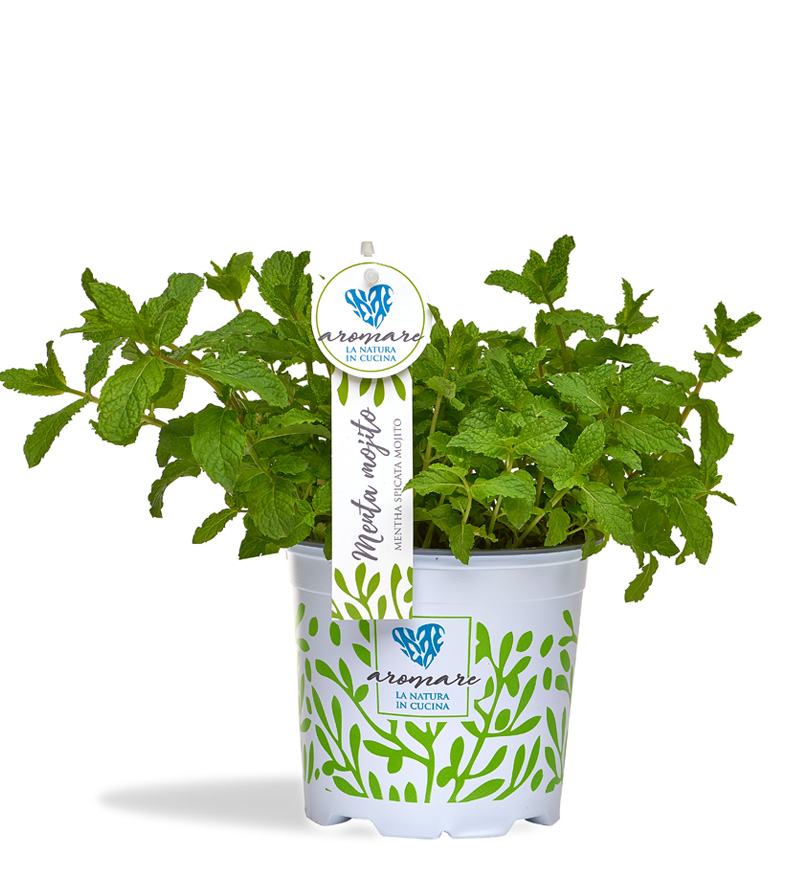
Mentha Spicata Mojito
BOTANICAL AND CULTIVATION INFORMATION
Mint cultivation becomes easy if you place it in the area of the garden or terrace that is most congenial to it where it can grow healthy and lush.
Unlike many other aromatics herbs that want sunny locations, mint wants a half-shade area and a fertile and loose soil.
Mint loves water and you should not miss this precious element so: abounds with watering.
It is multiplied by the stolons, pieces of stem that crawl on the ground where they form the root system.
This aromatic, rustic and few pretences herb grows well in temperate climates but does not fear the cold losing its aerial part to the first frosts and vigorously copying in spring.
THERAPEUTIC PROPERTIES
Excellent then in cases of cooling both to decongest the airways and to disinfect them.
Mint is also an analgesic and rinses with mint-based products calm the pain of the teeth and fade the mouth.
Even chewing fresh mint leaves serves the purpose.
If you then often accuse stomach heaviness or difficulty digesting its fresh chewed leaves will give you a perfect digestion. It is not for nothing that mint is used in cooking, especially as a digestive and tonic.
The leaves, the apex of the stems and the flowering tops are used fresh or, alternatively, dried.
USE FOR COOKING
Complementary: cumin, cayenne pepper, verbena and ginger.
Properties: thirst-quenching, anti-spasmodic, digestive, anti-fermentative.
Recipes: sweet and sour dishes, herbal teas, cakes and pies, jams (fig species).
Pairings: to try with chocolate, fried vegetables, to flavour rice as in Indian cuisine, with meat and vegetables.
BEAUTY
The essential oil of mint is used in preparations for oral hygiene and antipruritic for dermatological affections
